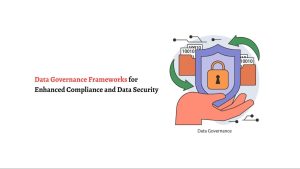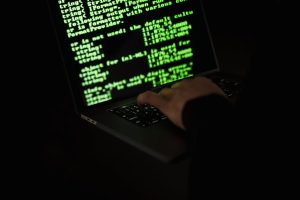Guidance and information about SOC Security Operations Center

What Is a Security Operations Center?
Key Functions of a SOC:
1. Taking Stock of Available Resources:
Ensuring visibility into the entire IT infrastructure, including endpoints, servers, and third-party services. Understanding and maintaining all cybersecurity tools and workflows.
2. Preparation and Preventative Maintenance:
Staying informed on the latest security innovations, trends, and threats. Implementing preventative measures such as regular system maintenance, updates, and patching.
3. Continuous Proactive Monitoring:
Utilizing tools like Security Information and Event Management (SIEM), Endpoint Detection and Response (EDR), or eXtended Detection and Response (XDR) to scan the network 24/7 for abnormalities and suspicious activities.
4. Alert Ranking and Management:
Carefully reviewing and managing alerts generated by monitoring tools, discarding false positives, and prioritizing responses based on the severity of the threat.
5. Threat Response:
Acting as the first responder to confirmed incidents, taking actions like isolating endpoints, terminating harmful processes, and minimizing the impact on business continuity.
6. Recovery and Remediation:
Working to restore systems and recover compromised data after an incident, including wiping and restarting endpoints or deploying backups in ransomware scenarios.
7. Log Management:
Collecting, maintaining, and regularly reviewing logs of all network activities for baseline definition, threat detection, and post-incident forensics.
8. Root Cause Investigation:
Determining the exact details of a security incident, tracing back to its source using log data and other information to prevent similar incidents in the future.
9. Security Refinement and Improvement:
Constantly refining cybersecurity tools and tactics to stay ahead of evolving cyber threats. Implementing improvements based on security roadmaps and real-world incident learnings.
10. Compliance Management:
Regularly auditing systems to ensure compliance with industry regulations and best practices, such as GDPR, HIPAA, and PCI DSS.
How a Security Operations Center (SOC) Works: A Step-by-Step Explanation
A Security Operations Center (SOC) is a critical component of an organization’s cybersecurity infrastructure, responsible for monitoring, detecting, and responding to security threats. Here’s a step-by-step breakdown of how a SOC operates:
Continuous Surveillance:
- The SOC monitors the organization’s digital landscape 24/7 using advanced tools like SIEM systems to analyze data from various sources.
Sharp Threat Detection:
- Analysts identify potential threats in real-time by scrutinizing logs, network traffic, and telemetry data for indicators of compromise.
Strategic Alert Handling:
- Alerts are categorized and prioritized based on severity, separating genuine incidents from false positives.
In-Depth Incident Investigation:
- Thorough investigations into confirmed incidents involve forensics, log analysis, and integration of threat intelligence for contextual insights.
Incident Triage and Response:
- SOC determines the response level by assessing risk and urgency, swiftly initiating actions to contain and mitigate threats.
Efficient Recovery and Remediation:
- Post-incident, the SOC orchestrates recovery, addressing vulnerabilities and implementing enhancements to prevent future incidents.
Log Management Expertise:
- The SOC collects and analyzes logs, establishing a baseline for normal activity, aiding in anomaly detection and threat identification.
Root Cause Analysis:
- Unraveling the root cause of incidents is crucial, guiding the SOC in implementing preventive measures against similar threats.
Continuous Security Refinement:
- The SOC iteratively refines security measures, incorporating insights from incident responses and adopting cutting-edge technologies.
Compliance Management:
- Regular audits ensure adherence to industry regulations and compliance standards, safeguarding data protection and privacy.
Benefits of a Security Operations Center (SOC)
A Security Operations Center (SOC) offers a range of invaluable benefits for organizations seeking to enhance their cybersecurity posture and respond effectively to emerging threats.
- Early Threat Detection: Enables real-time monitoring, ensuring the timely identification of cybersecurity threats.
- Rapid Incident Response: Swift actions by SOC mitigate damage during security incidents, preventing further escalation.
- Effective Response Coordination: Centralized structure ensures seamless collaboration among cybersecurity professionals.
- Comprehensive Visibility: SOC monitors networks, endpoints, and cloud services for a holistic view of potential threats.
- Efficient Log Management: Collection and analysis of log data aid in establishing baselines and post-incident investigations.
- Continuous Security Improvement: Root cause analysis guides enhancements to security measures for ongoing refinement.
- Compliance Assurance: SOC ensures adherence to data protection and privacy regulations for industry-specific standards.
- Risk Reduction: Proactive threat management by SOC minimizes the risk of financial losses and reputational damage.
- Operational Efficiency: Automation tools optimize routine tasks, allowing SOC analysts to focus on complex threat analysis.
- Business Continuity: Ensure quick incident response, minimizing downtime and maintaining business resilience.
Rules:
Your security operations’ “framework” is formed by the SOC team members and the security tools (like software) you use.
A SOC team’s members include:
Manager: The head of the gathering can step into any job while directing the general security frameworks and techniques.
Analyst:e Analysts compile and examine the data, either from a previous period (such as the preceding quarter) or from a breach.
Investigator: Working closely with the responder (often a single individual performs both the “investigator” and “responder” roles) after a breach, the investigator determines what took place and why.
Responder: Responding to a security breach necessitates a variety of tasks. A person familiar with these requirements is essential during a crisis.
Auditor: Legislation now in effect and the future contains compliance requirements. This job stays aware of these necessities and guarantees your association meets them.
Note: One person may play multiple listed roles, depending on the size of an organization. The entire “team” may sometimes come down to one or two people.
Practices:
To “assess and mitigate threats directly rather than rely on a script,” numerous security leaders are shifting their focus away from technology and the human element. While working to identify new risks, SOC agents manage known and existing threats continuously. In addition, they work within their risk tolerance level and satisfy the requirements of both the company and the client. Human analysis is required to restate major incidents, even though technology systems like firewalls and intrusion prevention systems (IPS) may stop simple attacks.
The SOC must keep up with the most recent threat intelligence and use it to improve internal detection and defense mechanisms for the best results. According to the InfoSec Institute, the SOC correlates information from various external sources with data from within the organization to provide insight into threats and vulnerabilities. The SOC is aided in keeping up with changing cyber threats by this external cyber intelligence, which includes news feeds, signature updates, incident reports, threat briefs, and vulnerability alerts. To keep up with threats, SOC staff must continuously feed threat intelligence into monitoring tools, and the SOC must have processes in place to distinguish between actual threats and non-threats.
Successful SOCs use security automation to improve their effectiveness and efficiency. Organizations can improve security measures and better defend against data breaches and cyberattacks by combining highly skilled security analysts with security automation. Managed security service providers that provide SOC services are a popular choice for many businesses that do not have the in-house resources to accomplish this.






